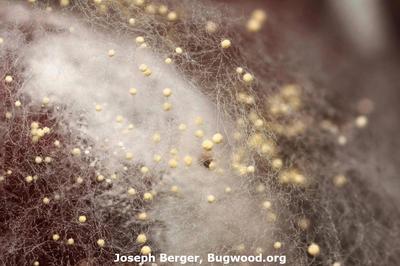Fruit Molds
Aspergillus spp.
Fungus
In a Nutshell
- Discoloration of the fruit shell.
- Hulls turn light beige to yellow or brown.
- Rot of fruits.
Can also be found in
Symptoms
If humid conditions prevail during the maturation period of the fruit, several fungi can colonize and decay pistachio fruits. This is mainly denoted by a discoloration of the shell and, in some cases, the production of odorless and colorless aflatoxins. Depending on the degree of colonization or the type of fungus, the discoloration and decay will be more or less pronounced. Usually, the hulls turn light beige to yellow or brown. Under the hulls, signs of fungal growth are visible on the shells, which may be stained. Hulls often adhere to shells. Dehiscent fruits and those attacked by insects are particularly affected.
Recommendations

Organic Control
There are no very effective biological treatments for the disease. However, copper-based biological fungicides have shown acceptable efficacy when applied under favorable climatic conditions.

Chemical Control
Always consider an integrated approach that combines preventative measures with biological treatments if available. Take steps to control Megastigmus pistaciae and Eurytoma plotnikovi with insecticides. Treat affected trees preventively with products based on chlorothalonil (200ml/100L) or copper. Applications at the end of the harvest are very effective because they avoid the overwintering of the disease on the fruits. The efficacy of treatments depends on the timing of application, the use of recommended doses and the speed of the atomizer.
What caused it?
Fruit rot in Pistachio is caused by several species of Aspergillus, but also by some species of Penicillium, Stemphylium or Fusarium. The disease is often associated with insect infestations, particularly the pistachio seed chalcid (Megastigmus pistaciae) and the pistachio seed wasp (Eurytoma plotnikovi). The holes created by these pests facilitate the penetration of the fungi. High temperatures, wet and humid conditions during the maturation period favor the disease, although infection by Aspergillus spp. can occur under drier than normal conditions. Darkness and lack of aeration are also factors contributing to the spread of the disease. Lack of water in late spring and early summer can increase the number of dehiscent fruits, and thereby favor the disease cycle.
Preventive Measures
- Do not graft on Pistacia atlantica as this increases the number of fruits that dehiscence early.
- Make sure to water appropriately in late spring and early summer as drought may increase the number of dehiscent fruits.
- Avoid storing pistachios for long periods of time in dark, poorly aerated places.
- Avoid the attacks of Megastigmus pistaciae (pistachio seed chalcid) and Eurytoma plotnikovi (pistachio seed wasp).
- Avoid harvesting later in the season and do not harvest when the weather is humid and wet.



